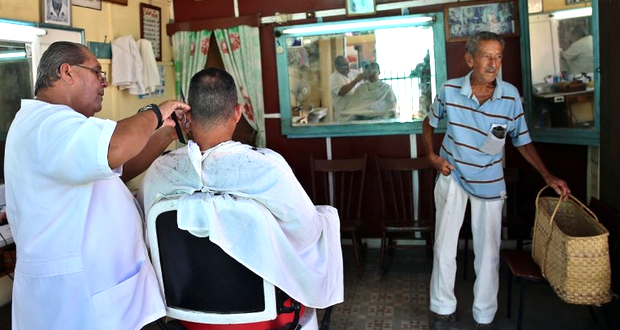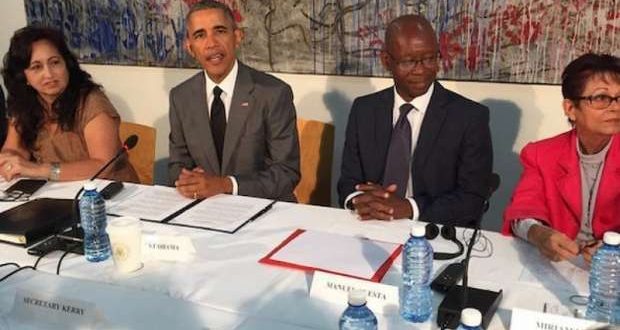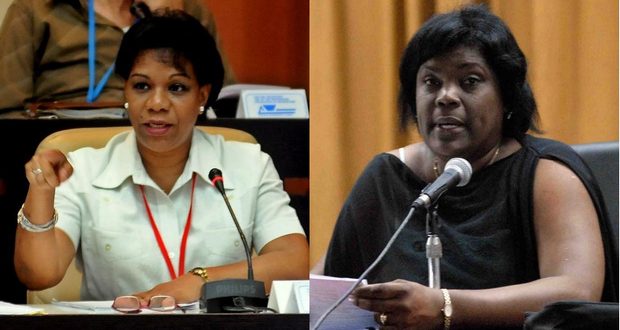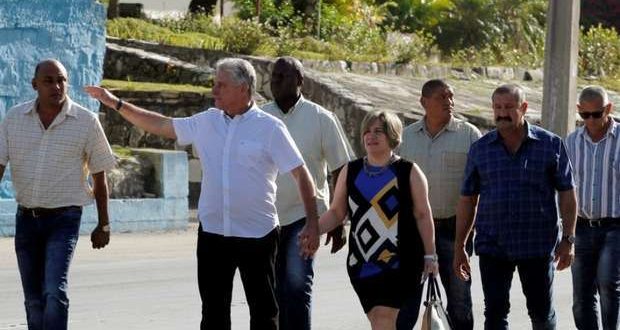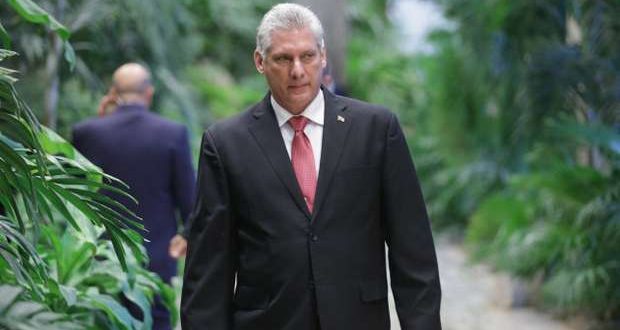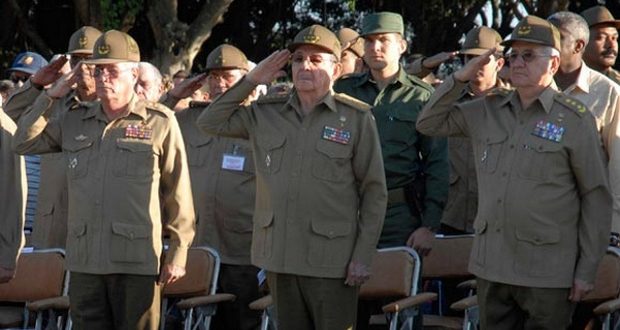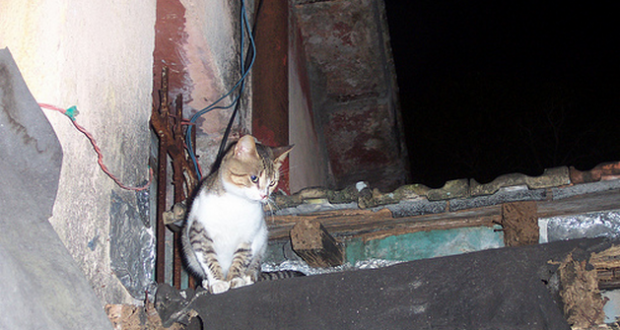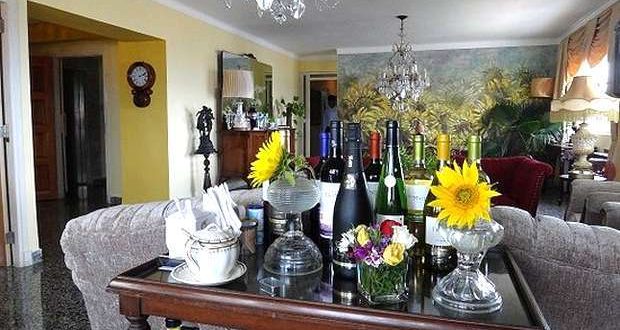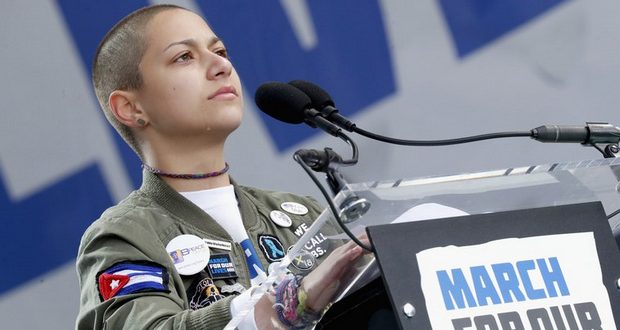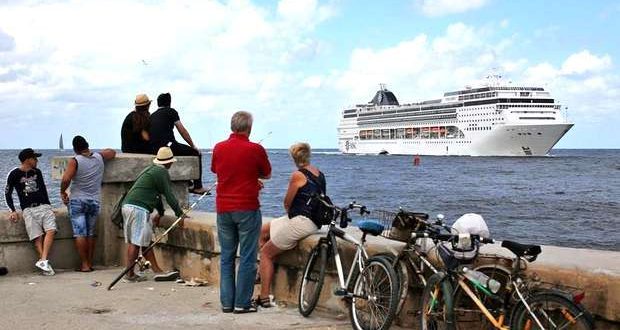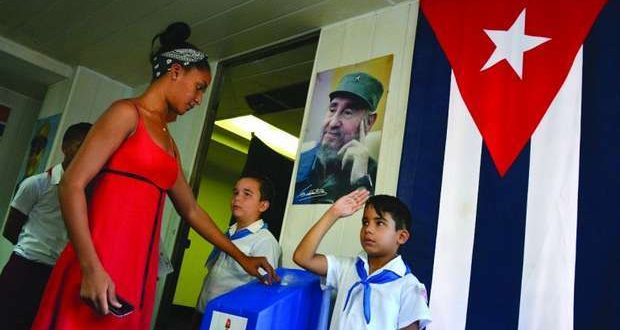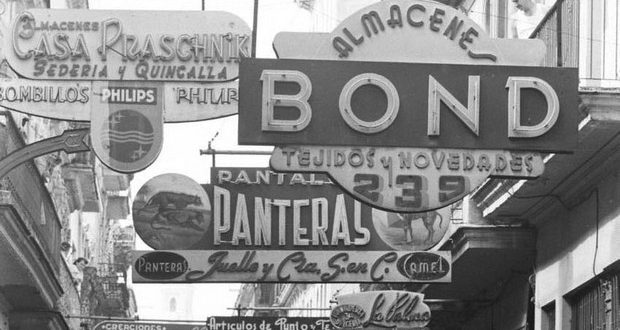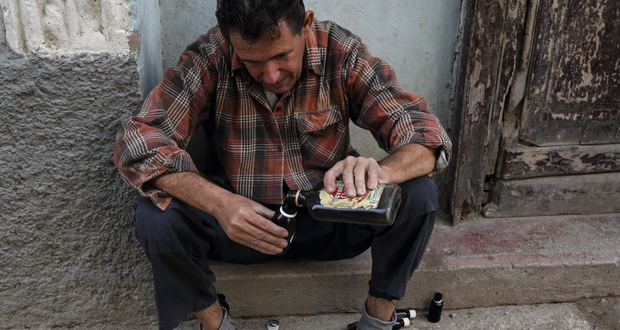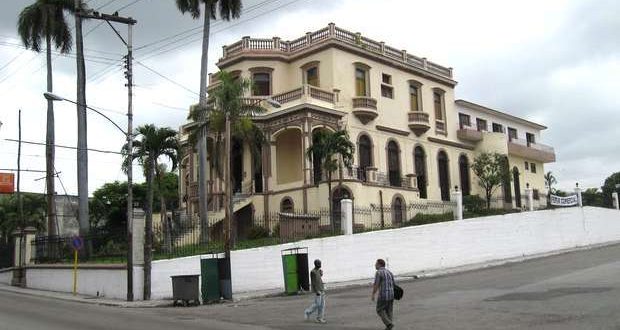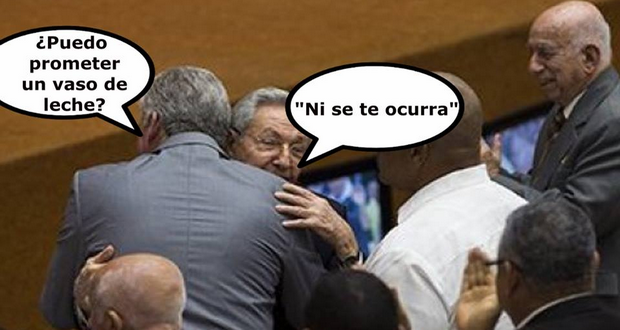
Iván García, 10 May 2018 — It seems a lot of time has passed since the night of July 31, 2006 when Fidel Castro’s former secretary, Carlos Valenciaga, announced on the eight o’clock news that the bearded former guerrilla leader was retiring due to illness.
Most Cubans remember what they were doing at that moment. Fifty-six-year-old Pedro Antonio, a worker at a steel plant on the outskirts of Havana was having dinner with his family when the news produced a solemn silence at the table. continue reading
“We thought ‘el Fifo’ was vanishing into thin air. Everyone was wondering how things would be under his brother Raúl, who had a reputation as a strongman. I remember that there was a hurricane that year and they sent the black berets* out into the streets. Anyone found carrying a carton of eggs without a good explanation was sent to prison. At my workplace people were stealing hand over fist. But once Raúl was in charge, he started taking measures to end the theft. Before that, if they caught you stealing, they just fired you. Now if they catch you, you’ll go to jail,” says Pedro Antonio.
He adds, “Raúl began a series of measures that won him popular approval, such as increasing self-employment, legalizing the sale of cars and homes, allowing Cubans to stay in hotels for foreign tourists, letting people have cell phones or to travel overseas without so much red tape. If you compare it to Fidel’s era, I think things are better.”
That was a decade ago. Sergio, a 69-year-old retiree, has only seen the internet in a movie broadcast on state television on Saturday nights. Seated under a leafy ceiba tree in Córdoba’s La Víbora Park, south of the capital, he can talk to his son, who lives in Miami, using the IMO video call app in one of the more than 300 wifi hotspots set up by the regime throughout the island.
Until July 4, 2013 the internet seemed like science fiction to a wide segment of the Cuban population. On that day a little more than 160 navigation centers were opened. Previously, wireless networks had been set up in hundreds of parks and public squares.
In the fall of 2017 the Nauta Hogar service became commercially available in certain areas for customers with landlines. ETECSA, Cuba’s only telecommunications company, plans to begin offering an internet service for data on mobile phones this year.
“Before 2013 I was spending between 6 and 10 CUC for an hour of internet service at Havana hotels in order to communicate with my son by email. It fell one CUC, from 4.50 CUC an hour, which is what it was costing in at the beginning of 2013. That was still expensive. It’s the equivalent of two days pay for an average worker. I have been able to visit my son and grandchildren in the United States four times. That’s the good part. The bad part is that, with the meager pensions they pay retirees — around ten dollars a month in my case — a lot of elderly people, some with serious illnesses and senile dementia, have to go out into the streets in search of four pesos in order to survive,” says Sergio.
Retirees have been the biggest losers from the Castro regime’s timid economic reforms. Their pensions are frozen in time. “My check goes to buying produce and rice, and paying for electricity,” says 72-year-old Mercedes who, in spite of persistent arthritis, sells peanuts at bus stops.
The aging population is a big unsolved problem for the country’s leaders. Within seven years, 20.1% of the Cuban population will be over 60 years of age. There are not enough material or financial resources for social services to deal with what comes next.
Emilio, an economist, believes that the “accelerated aging of the population coupled with an alarming rise in emigration” — between 2013 and 2017 almost one and a half million Cubans emigrated, though that has been curbed by repeal of the so-called wet-foot-dry-foot law in the United States — “will lead to a significant labor shortage, in both skilled and unskilled occupations, by 2030 if not before. This is already being seen in manual labor jobs such those in construction and farming. The money needed for social services could be generated by abolishing the armed forces, as Costa Rica has done, considering that it consumes between eight and ten percent of GDP.”
Officially, Raúl Castro ruled the country for ten years, doing so initially on a provisional basis. During that time he approved a string of very popular measures that expanded self-employment and repealed absurd regulations that turned Cubans into third-class citizens in their own country. Later, however, he put the brakes on privately operated 3D movie theaters and clothing stores in favor of the government owned corporations run by the military.
In a speech in Camaguey, a province 350 miles east of Havana, he promised every Cuban a glass of milk. He also promised prosperity and sustainability, wholesale markets for the private sector, changes to the constitution, new laws governing press and film production, abolition of the two-currency system, a regulatory framework for small private companies and expansion of the cooperative business sector.
For a variety reasons, more political than economic, he failed to fulfill these promises. The biggest failure was his agricultural policy. He authorized the lease of public land to farmers, modified the regulations governing agricultural cooperatives, shut down operations that were inefficient and negotiated better payment terms for meat and dairy producers.
But it was not enough. Agricultural production remained tightly controlled and the sector showed no growth, not in the sugarcane nor in livestock.
A glass of milk, a glass of orange juice and a steak remain luxuries for most Cubans. Unless you are a child under the age of seven, if you want milk, you must it buy it in stores which only accept hard currency.
Only 21% of the major elements of Raúl Castro’s reforms, referred to as guidelines, were implemented. Excessive state control, fear of small family businesses accumulating large quantities of cash and opposing factions within the government led to a reversal of economic reforms.
In foreign affairs, Raúl Castro II succeeded in reestablishing economic relations with the United States after a year and a half of secret negotiations. And for the second time in Cuban history, a US president — Barack Obama — visited the island.
His historic speech in Havana’s Gran Teatro still resonates with a large segment of the Cuban population which is hoping for profound change. But Obama’s popularity and his strategy of favoring the private sector aroused discomfort in the regime, which abruptly halted the reforms.
The regime managed to have a large portion of its foreign debt forgiven and negotiated better financial terms with its Club of Paris creditors. Cuba’s military regime, along with the Catholic church, also played a key role in negotiating peace agreements in Colombia.
Raúl Castro never intended to initiate reforms of a political nature. Dissent will never be legitimized in a Castro-affiliated government like that of newly elected Miguel Díaz-Canel. Nor will political parties, a free press and independent civic organizations be allowed.
According to a Communist Party source, “different government agencies have conducted opinion polls, so the public’s frustrations and discontents are well-known. Almost all are related to the economy. That is where the new president will focus his efforts.”
In other words, we can expect economic reforms from the new regime. But democracy will have to wait.
*Translator’s note: Special police forces who are deployed during emergencies such as natural disasters or to apprehend dangerous criminal suspects.

